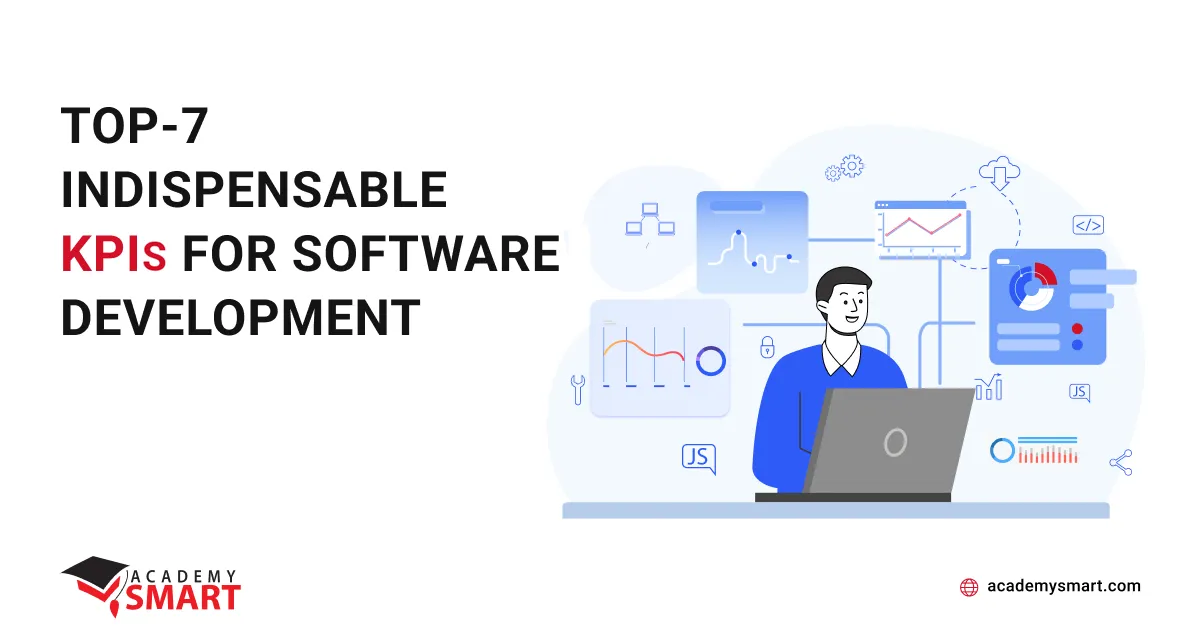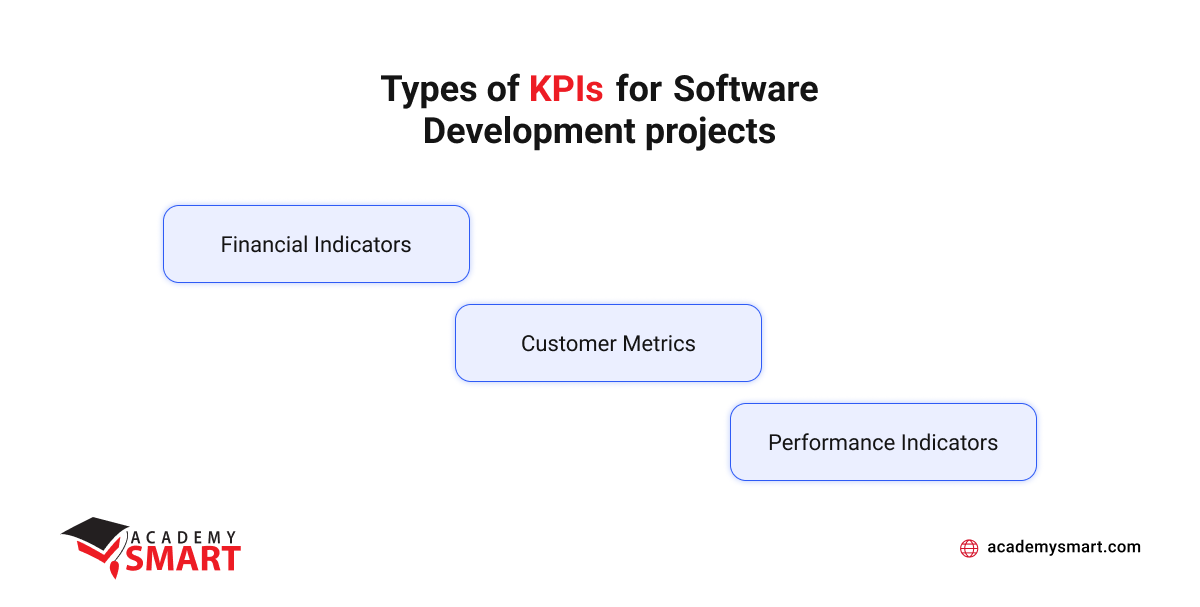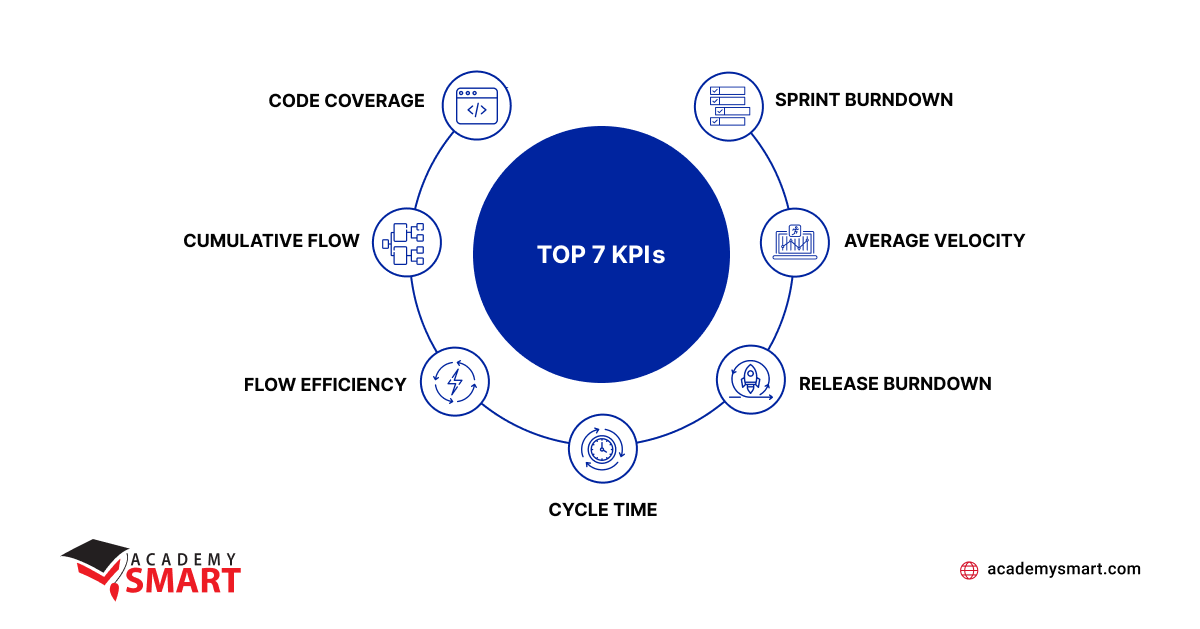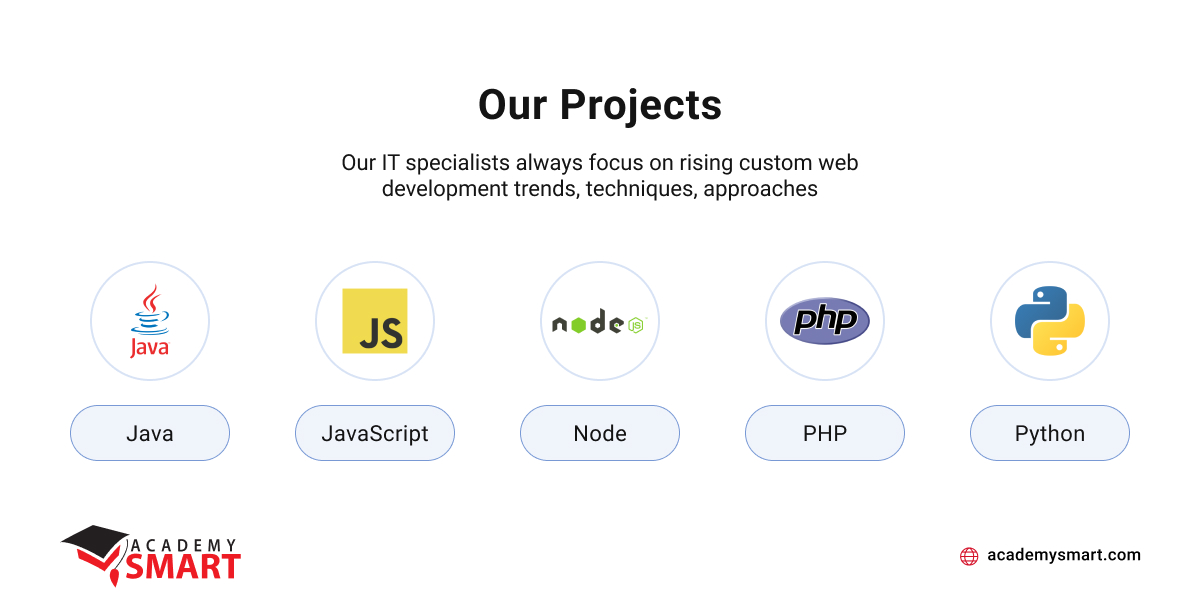
TOP-7 indispensable KPIs for Software Development
Contents
Building a good and well-coordinated development team that combines high professionalism and dedication is a severe challenge for a business of any size. Undoubtedly, it’s not enough to find people with the necessary expertise, put them in the same room, and announce your ideas, to create a successful software product. It is equally important to organize their workflow so the team can respond flexibly to changes and overcome current difficulties without wasting time and efficiency. But, if we aim for developer performance, we need reliable tools to measure and predict it.
In this article, we will consider such a concept as Key Performance Indicators (KPI), their scope in the agile software development methodology, and examples of the most critical metrics for the effective creation of digital products. Of course, we will not overload you with technical information. However, the knowledge gained will allow you to understand better the project managers and team leads responsible for developing your software.
What is KPI in Software Development
KPI (Key Performance Indicator) is a measurable value indicating how well a project or process performs against its objectives. In software development, KPIs are used to check the progress and success of a project based on specific metrics such as code quality, time-to-market, customer satisfaction, or budget adherence.
By selecting appropriate KPIs, businesses can ensure that their development teams meet project goals, stay on schedule, and deliver high-quality software products. That helps to prioritize resources and make informed decisions that can ultimately lead to improved efficiency, productivity, and profitability. Without the right KPIs in place, it can be difficult to gauge progress, identify problems, or make data-driven decisions.
So, what is the role of KPIs in software development?
- They provide a clear picture of the project’s progress, which can help clients make reasonable decisions about future investments in software development.
- KPIs help identify improvement points, allowing stakeholders to take corrective action before the project becomes unmanageable or unsuccessful.
- These metrics help align business goals with development efforts, ensuring that the project’s outcomes meet the client’s expectations and contribute to their overall business objectives.
Flexible workflow management, ensured by clever performance measurement tools, allows developers to execute their duties and promptly deliver quality software products to their clients. Watch the video below to see the work of Academy Smart examples.
Types of KPIs for Software Development projects
Key Performance Indicators used in software development generally assess a process efficiency and are typically grouped into three categories of metrics: customer, financial, and efficiency. Some of them relate to the characteristics of the market niche’s current state and the product’s adequacy to the needs of its potential consumers. Such indicators are critical for forming the right priorities in the roadmap of the product being created. Some describe the financial efficiency of software development and maintenance and the ratio of expected and actual profits to increase it. A particular pool of KPIs exists to measure the performance of developers and correct their efforts.
Financial indicators
Financial KPIs used in software development are focused on measuring a company’s revenue. These ones typically include net income, the remaining income after deducting expenses, and taxes, interest payments, etc. This calculation helps determine the annual budget the enterprise can allocate to the development process. Companies often compare their financial KPIs with competitors to identify improvement points and increase profitability.
Customer Metrics
Accurately measuring customer satisfaction, retention, and involvement is essential to any successful business software. By analyzing these metrics, companies can better understand their customers’ needs and preferences, which helps to tailor their products and services to maximize revenue and customer loyalty. By comparing different indicators, businesses can evaluate the effectiveness of their sales and marketing strategies, identify areas for improvement, and make weighted decisions. This approach ensures that companies target the right audience with the correct messaging at the best time, resulting in increased investment returns.
Performance indicators
Software development KPIs measure the time from an idea’s inception to a product’s full release. That involves tracking various stages of the development process, including discovery, gathering project requirements, project planning, document signing, development, testing, and more. It allows developers to simplify and streamline the process, leading to faster and more efficient product releases. Additionally, these KPIs help teams to establish realistic timelines and provide accurate estimates to stakeholders regarding project completion dates.

Different types of Software development KPIs
What are the benefits of KPIs for Software Development
Key Performance Indicators are essential in modern software development to track progress toward achieving a project’s goals. The benefits of using KPIs for business software development are the following:
- KPIs help to define clear goals and objectives for the software development process. Businesses can set specific and measurable KPIs to ensure they work towards the desired outcomes.
- KPIsThey give businesses data-driven insights into the development process. By tracking KPIs, companies can identify points of pain and make informed decisions to optimize the development process, allocate resources effectively, and improve overall performance.
- KPIsBest practice KPI setting for software development provides a framework for monitoring and evaluating the project’s progress. It allows developers to identify potential bottlenecks or roadblocks and take corrective action to keep the project within budget.
- KPIsKPIs can be used to measure the performance of individual team members or the team as a whole. That gives management valuable insights into team’s effectiveness and helps make prudent changes to optimize performance, enhance customer satisfaction and increase revenue.
Well-organized work is the key to the successful completion of the project. To do it qualitatively and on time, flexibly overcoming the current difficulties is a sign of an experienced and competent team. Our clients have already had the opportunity to be convinced of the professionalism of our company, examples of which are given in the portfolio of Academy Smart.
TOP-7 KPI for software development
Various metrics allow you to evaluate both the effectiveness of the development process and quite concrete moments. With data from already delivered software products and knowing the specifics of certain existing technical solutions, the development team can recommend using those that will speed up the release or reduce costs.
A case in point that is strategic in any software creation is the choice of the technology stack. Behind brief statements like “This solution will take longer, cost more, or be limited” are always concrete numbers of code complexity and performance, speed of code creation and deployment, technology’s ability to scale and peak loads, and the team’s ability to deliver on time.
Below is a list of KPIs for evaluating developers’ efficiency and product quality in custom software development.
1. Sprint burndown
The Sprint Burndown measures the development team’s progress towards completing the sprint goal by tracking the remaining work in a sprint over time. It shows the amount of work remaining and the pace at which it is being completed, allowing the team to adjust their development efforts as needed. This KPI provides valuable insights into the team’s performance, enabling them to identify areas for optimization. The Sprint Burndown also enables the development team to identify potential bottlenecks and take corrective action before they impact the project timeline or quality.
2. Average velocity
Average Velocity measures the work the development team completes in each sprint. Specifically, it tracks the number of story points or other work units the developers end on average over a specified period.
The specificity of this KPI lies in its ability to provide a clear and quantifiable measure of development productivity. It reflects the team’s capacity to deliver high-quality software consistently and allows for comparisons between sprints or projects. One of the key benefits of the KPI is providing a straightforward way to estimate the amount of work the team can realistically complete in future sprints. That helps ensure that the team is not overcommitting or underestimating their capacity, leading to missed deadlines and compromised quality.
3. Release burndown
Release Burndown is a KPI that measures the team’s progress towards completing the release goals by tracking the remaining work in a release over time. Development teams use the release progress chart to determine if they are ahead of, behind, or on schedule in completing current tasks. This KPI also provides reliable data to stakeholders about when they can expect to see profits after the release.
4. Cycle time
Cycle Time measures the time developers take to complete a task, from when it is started until it is delivered to the customer. It is a valuable metric that provides insights into the effectiveness of the development process.
This KPI reflects the time spent on a task, including any delays or bottlenecks that may occur during its execution. It helps the team to identify inefficiencies, eliminate waste, and optimize their workflow to reduce cycle time.
One of the benefits of Cycle Time is that it provides a way to measure the developers’ productivity, enabling comparisons between different tasks or projects. Another one is that this KPI helps the development team deliver high-quality software within a reasonable timeframe.
5. Flow efficiency
Flow Efficiency is a KPI for software development that measures the percentage of time that work is actively being worked on in a process, as opposed to the time it spends waiting in a queue. Its specificity lies in its ability to track the time spent on a task or process, including any waiting time. It clearly shows how well workflows are through, highlighting potential inefficiencies that may slow the development.
This KPI helps ensure the developers prioritize tasks effectively. By tracking the Flow Efficiency KPI, the team can identify areas where work is getting stuck or taking longer. By reducing this time, the development team can improve their ability to deliver quickly and efficiently, increasing customer satisfaction and improving their competitive position in the market.
6. Cumulative flow
Cumulative Flow provides a visual representation of the work in progress (WIP) at each stage of the development process. This KPI allows the team to identify potential issues and make data-driven decisions. By measuring it through different stages of the process, the team can see the impact of changes in real time, enabling developers to adjust their approach and optimize their workflow to improve quality and efficiency.
7. Code coverage
Code coverage represents the percentage of code that has been executed during automated tests compared to the total amount of code in the application. It measures the effectiveness of automated tests in identifying defects and ensuring that the code is working as intended. By measuring the percentage of code covered by automated tests, developers can identify areas where testing needs to be improved. This KPI can also help identify code areas needing refactoring or optimization to enhance testability.
Several other KPIs, like Code Simplicity, Code Stability, or Code Churn, are used to measure different aspects of code quality. Testers may also use, for example, Bug Rates KPI to be informed about the total number of errors and their severity.

The most needed KPIs in custom software development
How Academy SMART can help you
Academy Smart is a Ukrainian custom software development team with mastery in Agile methodologies. All we’ve discussed above we practice daily in our workflow to help our customers achieve their business goals and profits and improve our productivity and efficiency.
By partnering with us, you get experienced outstaff employees who can quickly become part of your development team, providing creativity and high-quality programming. In addition, our company develops a variety of software from scratch. Delegating the building of your application to our specialists, you are guaranteed to receive close attention to your ideas and the best recommendations for their implementation, a team of experts and an enterprising project manager, high-quality code and modern technical solutions, as well as responsible and timely fulfillment of our obligations.
Let us know your challenges, and we will provide professional assistance you need.
KPI for Software Development: Frequently Asked Questions
What are good KPIs for the IT department?
The best metrics allow you to evaluate the effectiveness of tasks and demonstrate problem areas, creating prerequisites for the development team to make timely decisions.
What are the most important KPIs for Software Development?
The most important KPIs are Development Velocity, Release Burndown, Cycle Time, Cumulative Flow and Code Coverage. But several additional metrics may significantly increase the awareness of the development team about the effectiveness of their work and the quality of the product they create.
Book a free consultation

Reach out to start talking today!











